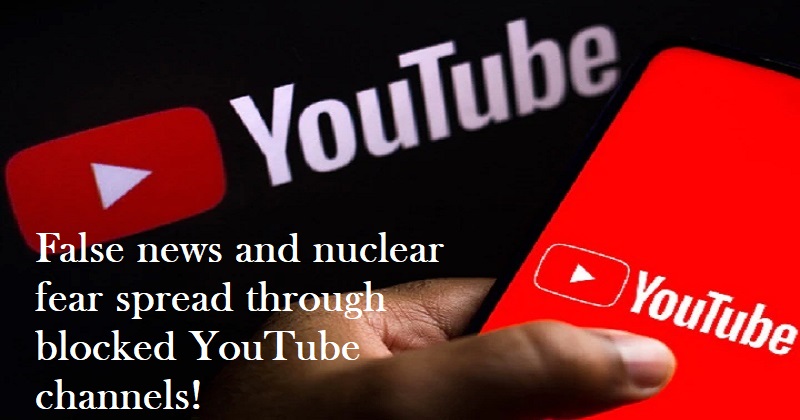
From a ‘nuclear explosion’ in the country to North Korea sending troops to Ayodhya, the government-banned 102 YouTube channels were known to routinely spread disinformation about India to their lakhs of subscribers, and were ‘monetising fake news,’ officials said.
The government used its emergency powers under the Information Technology Rules, 2021 to launch the first crackdown on such YouTube channels in December last year. The government has blocked access to the 102 YouTube channels, numerous websites, and social media accounts that used templates and logos of popular television channels to mislead their viewers into believing that the news presented by them was authentic, according to officials.
According to a ministry official, intelligence agencies have been monitoring social media accounts and websites and reporting them to the ministry for action. ‘ Several of these channels were even earning revenue through advertisements and monetising fake news,’ the official said. The Ministry of Information and Broadcasting ordered the blocking of eight YouTube channels, including one based in Pakistan, for presenting news such as ‘ban on Bakra-eid celebrations in India,’ purported’ attacks’ on religious sites revered by Muslims, and a joint ‘invasion’ of Turkey by India and Egypt.
A M Razvi’s YouTube channel discussed ‘military action on Ajmer Dargah’ and ‘Muslims flying an Islamic flag on a temple,’ while ‘News ki Duniya’ channels in Pakistan claimed that the ‘Qutub Minar mosque’ had been demolished. Another YouTube channel, ‘Naya Pakistan Global,’ claimed that Kim Jong Un, the leader of North Korea, had sent his army to Ayodhya. ‘ The Ministry found the content to be detrimental to India’s sovereignty and integrity, security, friendly relations with foreign states, and public order in the country,’ a ministry official said.
He stated that the content was covered by Section 69A of the Information Technology Act of 2000. Section 69-A empowers the government to restrict access to any content in the interest of the country’s sovereignty and integrity. In January of this year, the Ministry of Information and Broadcasting ordered the blocking of YouTube channels that spread content designed to encourage separatism, divide India along religious lines, and incite animosity among various sections of Indian society.
It had identified two networks: Apni Duniya Network, which had 14 YouTube channels, and Talha Films Network, which had 13 channels. Another YouTube channel, ‘Cover Point,’ claimed India had lost a nuclear warhead, calling it a ‘win’ for Pakistan and the ISI. The ministry stated that ‘all of these networks appeared to be operated with a single goal of spreading fake news aimed at the Indian audience.’
The ministry stated in December of last year that the YouTube channels in question had also posted content on protests on issues such as the three farm laws and the Citizenship (Amendment) Act, in an attempt to incite minorities against the government. ‘It was also feared that these YouTube channels would be used to post content to undermine the democratic process of the upcoming elections in five states,’ the ministry stated, referring to the February elections in Punjab, Uttar Pradesh, Uttarakhand, Goa, and Manipur.

Post Your Comments